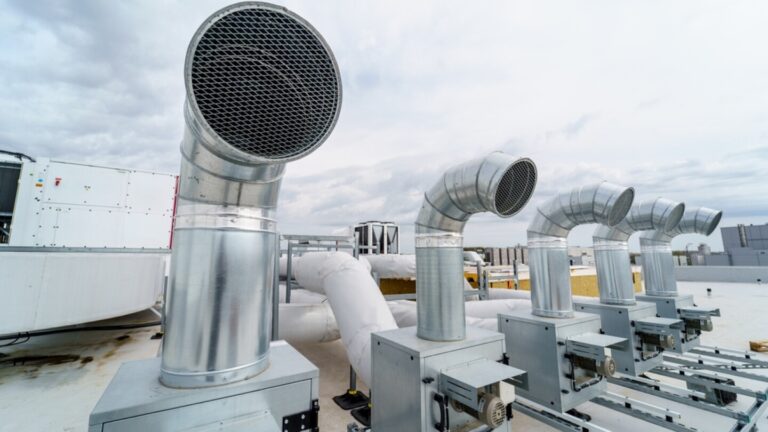The real estate industry has typically addressed carbon emissions with strategies such as greater energy efficiency, low-carbon materials, and tenant engagement and cooperation. Now add an even more critical component to the equation—refrigerant emissions. Any property using HVAC (and nearly all do) should be looking at the building’s refrigerants as the next big compliance and cost risk. Leaks, fines, and refrigerant phase-outs are already impacting asset portfolios. Here’s what real estate professionals need to know.
Refrigerant emissions are superpollutants
The built environment is responsible for a whopping 40 percent of global emissions each year, with heating and cooling activities forming the largest segment at about 15 percent. Compared to other greenhouse gases, however, the volatile chemicals used in today’s HVAC and other self-contained refrigeration systems are much more destructive than carbon dioxide when accidentally released into the atmosphere—up to 2,000 times when measured against the Global Warming Potential (GWP), which benchmarks carbon dioxide at “1.”
We often refer to refrigerants as the ugly duckling of climate solutions, because despite appearing unpromising, properly addressing them can avoid up to 0.5 degrees Celsius of global warming by the end of the century.
Tristam Coffin, co-founder and president, effecterra
Real estate portfolios with high-GWP refrigerants in their assets should begin the process of converting to low-GWP alternatives as soon as possible. Failure to be proactive about the issue could be costly. Refrigerants are an important but often overlooked piece of the emissions problem, with common ones such as R-410A now being forced out.
Regulations are here—noncompliance is costly
As refrigerant emissions comes into sharper focus with growing government oversight, ULI Greenprint has been educating its members through working groups, educational webinars, and in-person sessions on how to mitigate these so-called fugitive emissions. Members voluntarily report their refrigerant emissions annually as part of ULI’s State of Green report.
The issue with today’s refrigerants is hydrofluorocarbons (HFCs), synthetic organic compounds that are the fastest growing greenhouse gases globally. The…
Read More: Fugitive Emissions: Why Commercial Real Estate Can’t Ignore Refrigerants




